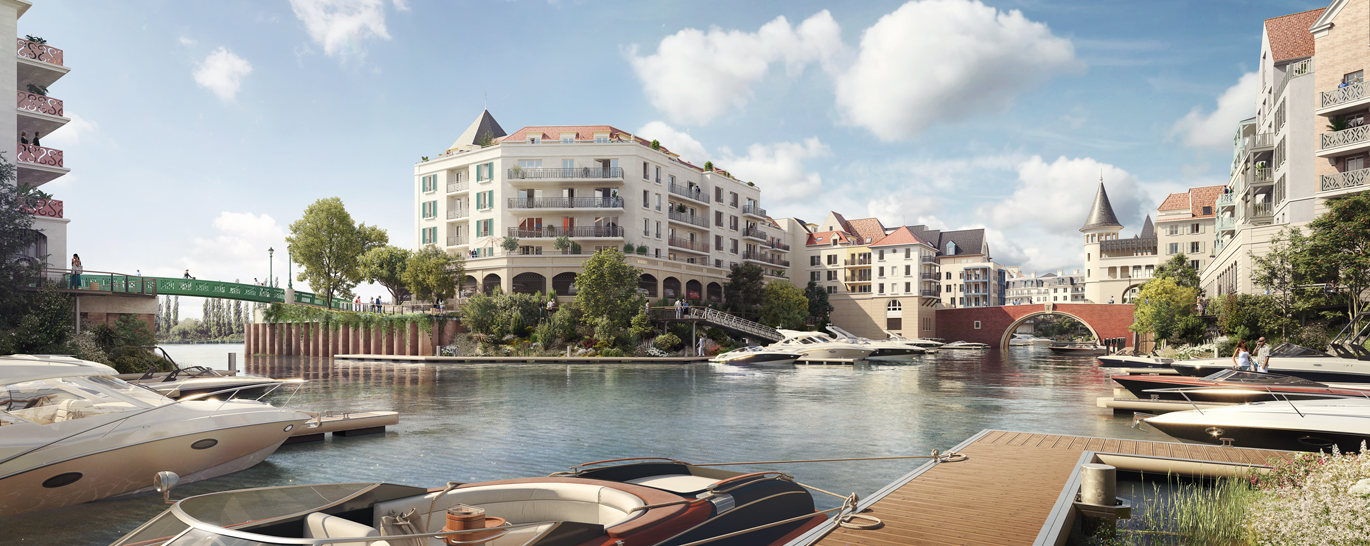
Easy living on the riverside
Urbanism
At the Paris suburb of Cormeilles-en-Parisis, UrbanEra, Bouygues Immobilier urban planning division, is creating a mixed-use neighborhood on an abandoned industrial site. Combining apartments, parks, retail, a bicycle path, and a marina, the future Seine Parisii promises to be a perfect illustration of its expertise in designing and constructing urban neighborhoods.
By Isabelle Godar
In late February, Colas earth-moving equipment was at work on the butte overlooking the Seine at Cormeilles-en-Parisis, a few kilometers northwest of Paris. Across the river, the green grass at the former Maisons-Laffitte racetrack adds a bucolic note to the view. Some 3,500 people will soon be moving into the mixed-use neighborhood created on these twelve hectares of industrial wasteland. It will include 1,200 apartments spread over fourteen building lots1, four hectares of green spaces, shops, restaurants, cafés on the riverside, a marina with more than 120 slips, a day nursery, and schools. Yannick Boëdec, the town’s mayor, points to another advantage of reconverting this former industrial site : “It will allow the town’s residents to stroll down to the river again.”
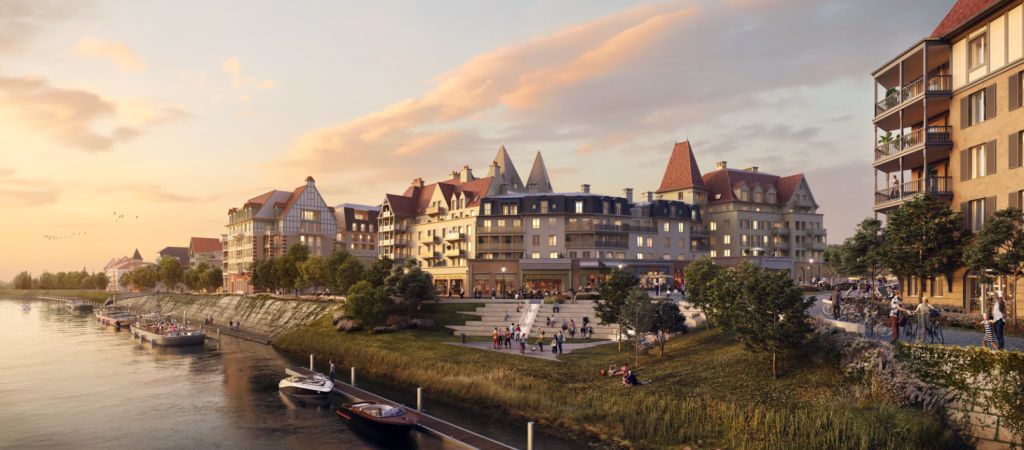
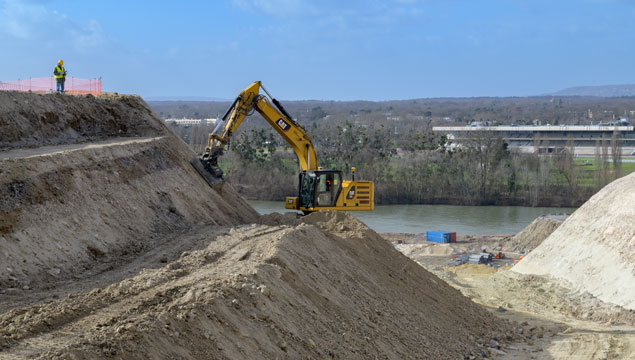
We want to allow the town’s residents to stroll down to the river again.
Mayor of Cormeilles-en-Parisis
4
hectares of green spaces
340
trees planted
120
berths
A new art of living
The name of this new neighborhood-village is Seine Parisii, in reference to the Gallic tribe that lived in this region. The truly special feature of this project is the marina2, where houseboats, aquatic activities, and restaurants at the water’s edge will be found. UbranEra has teamed up with Xavier Bohl, an architect-urbanist who looks to lakeside towns for inspiration and worked on the seaside development projects of Port Grimaud and the Presqu’Île de la Touques, at Deauville. “The marina and buildings are supported by piles because of the hydraulic conditions along the river”, he says. He also notes that “all the buildings are constructed above the highest locally recorded water level to protect them in the event of flooding, including the parking garages. The apartments start on the first floor, with permanent access to the exterior.”
As vice president of the Val d’Oise Council, mayor Yannick Boëdec is looking further ahead: ″Our aim is to make this a place people from elsewhere than Cormeilles will hear about. We really believe that cultural and leisure tourism can be developped here. There are many interesting sites in the region like the châteaux at Maisons-Laffitte and Saint-Germain-en-Laye and the fort at Cormeilles, and there is the bicycle route that connects Paris to Le Havre”. Other Bouygues group companies working on the project are Brezillon (soil decontamination and earthworks), Colas (roadworks), and Bouygues Travaux Publics (civil engineering for the marina).
Made for walking
The buildings designed by architect Xavier Bohl and his team are a blend of the picturesque and the classic. ″Their style is inspired by the charms of the riverside, the same we see in the paintings of the Impressionists. We didn’t want a neighborhood that was a high-tech demonstrator that would look like a new town,” insists Nathalie Garin-Chereau, the director of the project at UrbanEra. To respond to the needs of the post-Covid era, the apartments are more spacious than usual and have exterior extensions. Ninety percent of them also have a view of the Seine or the marina. Nature will be present everywhere at Seine Parisii. Four hectares of green spaces – 30 percent of the total surface area – have been created, and the riverbanks have been replanted to create an ecological connection to the forests of Saint-Germain-en-Laye and the Buttes du Parisis.
Our architecture is inspired by the charms of the riverside, the same we see in the paintings of the Impressionists.
ARChiTECT
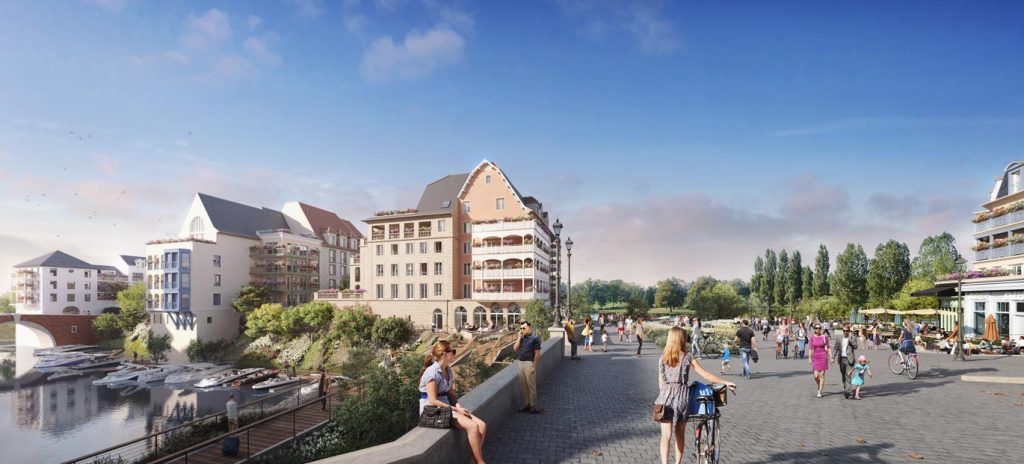
As in a village, local shops and other facilities will satisfy most of the everyday needs of residents and eliminate having to go into the center of Cormeilles. A day nursery for 60 children, a pre-school, and a primary school are already planned, as are a small supermarket, food shops, a delicatessen and a wine shop. Cars will not be the primary mode of transport within the neighborhoob. ″ We drew up the master plan so that everything was within walking distance and the train station was just a bicycle ride away,” say Garin-Chereau. A connection to the bike route encourages travel by bicycle, and two bus lines, one an extension and the other newly created, round out the mobility options. Architect Xavier Bohl is pleased: “This neighborhood will be a delightful mixture – boats, residents, tourists, cyclists, and walkers…” A vacation atmosphere right in the Paris region.
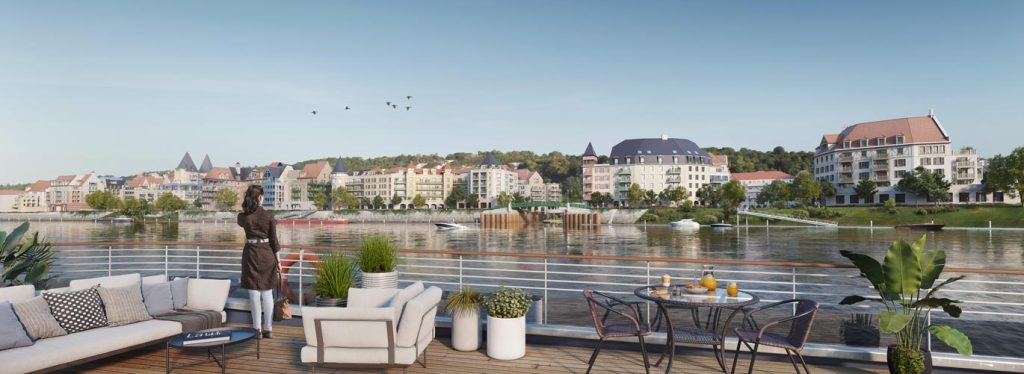
1. The developers are BNP Paribas Immobilier, Altarea-Cogedim, Patrignani (a subsidiary of Bouygues Immobilier), and Bouygues Immobilier
2. The marina will have the Port Propre and Pavillon Bleu ecological labels.